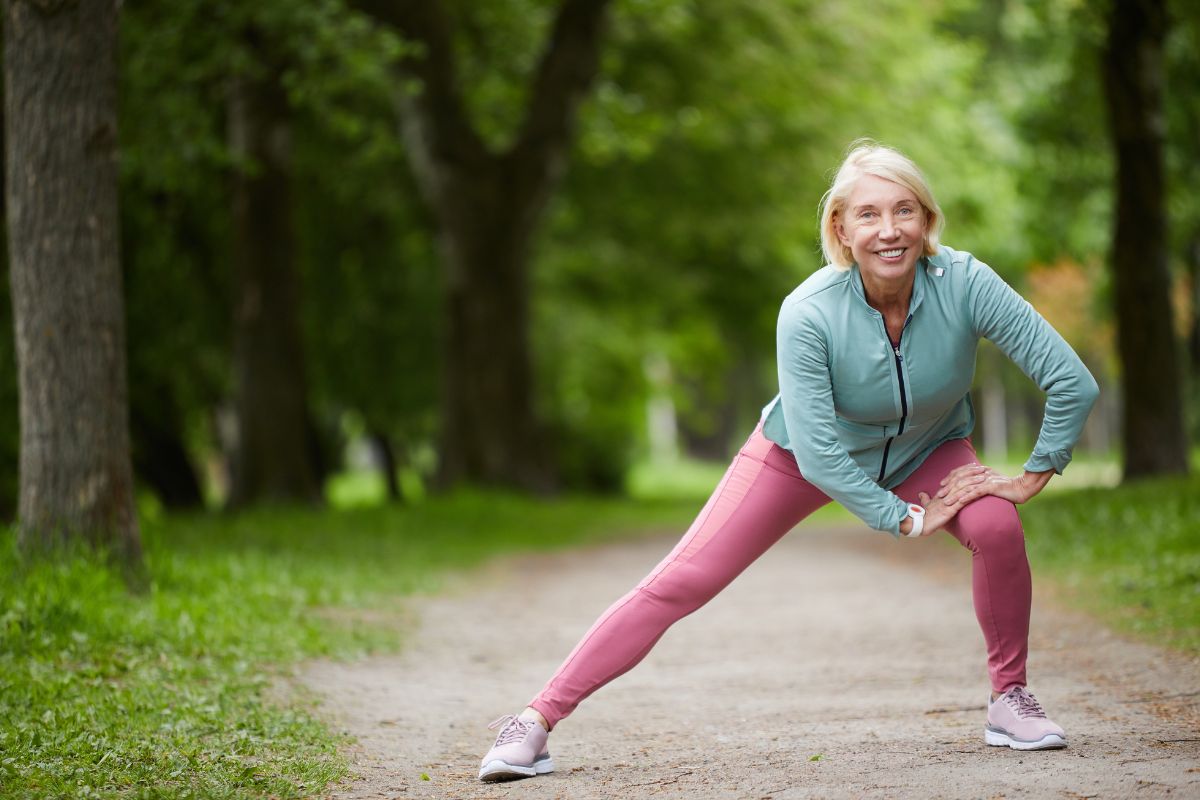Show table of content Hide table of content
As we age, maintaining physical fitness becomes increasingly crucial for overall health and well-being. For those over 65, traditional squats may pose challenges due to reduced muscle strength or balance issues. Enter the “chair squat” – a modified version of the classic exercise that offers numerous benefits without compromising safety. Let’s explore why chair squats are the ideal choice for seniors looking to stay active and healthy.
Benefits of chair squats for seniors
Chair squats provide a range of advantages for older adults seeking to maintain their fitness levels. These modified squats are particularly beneficial for:
- Improving lower body strength
- Enhancing balance and coordination
- Reducing the risk of falls
- Maintaining muscle mass
- Supporting joint health
By incorporating chair squats into their routine, seniors can consistently reach their fitness goals while minimizing the risk of injury. This exercise targets key muscle groups in the legs, core, and back, helping to preserve mobility and independence as we age.
Sport Practiced by 27 million Japanese people, this sport is the best for aging healthily.
Moreover, chair squats can be easily performed at home without the need for expensive equipment or gym memberships. This accessibility makes it an excellent option for seniors who prefer to exercise in the comfort and safety of their own living spaces.
Proper technique for chair squats
Performing chair squats correctly is essential to maximize benefits and prevent injury. Follow these steps to execute the perfect chair squat:
- Choose a sturdy chair with a seat height that allows your knees to bend at a 90-degree angle when seated.
- Stand in front of the chair with your feet shoulder-width apart.
- Slowly lower yourself as if you’re about to sit down, keeping your back straight and chest up.
- Gently touch the chair with your buttocks, but don’t fully sit down.
- Push through your heels to stand back up, squeezing your glutes as you rise.
- Repeat the movement for the desired number of repetitions.
For added stability, you can hold onto the back of a chair or use a broomstick horizontally in front of your chest. This modification can help seniors build inner confidence as they perform the exercise.
Incorporating chair squats into a senior fitness routine
To reap the full benefits of chair squats, it’s important to incorporate them into a well-rounded fitness routine. Here’s a sample workout plan for seniors:
| Day | Exercise | Sets x Reps |
|---|---|---|
| Monday | Chair Squats | 3 x 10 |
| Wednesday | Seated Leg Lifts | 3 x 12 (each leg) |
| Friday | Chair Squats | 3 x 10 |
Remember to start slowly and gradually increase the number of repetitions as your strength improves. It’s crucial to listen to your body and avoid distracting habits that might interfere with your focus during exercise.
Enhancing the chair squat experience
To make chair squats more engaging and effective, consider these tips:
- Use music: Create a playlist of your favorite tunes to motivate you during your workout.
- Set goals: Gradually increase the number of repetitions or sets to challenge yourself.
- Incorporate balance exercises: Combine chair squats with other balance-focused movements to improve overall stability.
- Practice mindfulness: Focus on your breathing and body awareness during the exercise.
By implementing these strategies, you can deepen your connection with your body and make chair squats a more enjoyable part of your daily routine.
Building a supportive environment for senior fitness
Creating a supportive environment is crucial for maintaining a consistent exercise routine. Here are some ways to foster a positive atmosphere for chair squats and other senior-friendly exercises:
- Join a senior fitness class: Participating in group classes can provide motivation and social interaction.
- Find an exercise buddy: Partner with a friend or family member to keep each other accountable.
- Utilize technology: Explore fitness apps or online communities designed for seniors.
- Create a dedicated exercise space at home with proper lighting and ventilation.
By cultivating a supportive environment, seniors can build trust in their abilities and maintain a consistent fitness routine. Remember, it’s never too late to start prioritizing your health and well-being through exercises like chair squats.
In summary, chair squats offer a safe and effective way for seniors to maintain their strength, balance, and overall health. By incorporating this modified exercise into their routine, individuals over 65 can enjoy the benefits of traditional squats without the associated risks. With proper technique, consistency, and a supportive environment, chair squats can become an essential component of a senior’s journey to lasting health and vitality.


